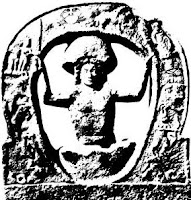Zeitgeist, the Movie – Christianity versus the Pagan Mystery Religions
The Zeitgeist Movie has taken up the task of comparing Christianity to the pagan mystery religions. The movie attempts to prove Christianity is just another myth, like these mystery religions, through comparing alleged similarities between these religions and Christianity. There is much work to be done on demonstrating the problems with these comparisons. I will begin with a quick look at a couple of the alleged similarities between Christianity and the pagan mystery religions stories. I am going to focus on the virgin birth, sacrificial death, and resurrection stories of four of the mystery religions (which I covered a little bit in previous posts).
Virgin Birth Stories:
Adonis: born from a myrrh-tree, the bark of which burst after ten months’ gestation, allowing the infant to come forth.
Osiris: the offspring of an affair between the earth god Seb (Keb or Geb, as the name is sometimes transliterated) and the sky-goddess Nut
Mithras: born out of a rock on the banks of a river under a sacred fig-tree, came forth clenching a dagger in one hand and a torch in the other hand; which he used to illumine the depths from which he came
Dionysus: Zeus, in the form of a serpent, visited Persephone and she bore him Zagreus, that is, Dionysus, a horned infant
Sacrificial Death Stories:
Adonis: Ares takes on the likeness of a boar in order to attack Adonis, Adonis is torn to pieces by the wild boar while hunting
Osiris: his brother, Set (or Seth), coaxed Osiris into a coffin, which he soldered shut with lead
– Osiris was then set adrift in the Nile to die
– later was found by his sister, Isis, who brought him back with her
– when Set discovered Osiris’ body, he chopped Osiris up into 14 pieces and spread him out all over the land
Mithras:– the sacrifice was a bull who contained all the “germs” of life, there is no recorded death of Mithras
Dionysus: the Titans attacked him while he gazed at himself in a mirror, he took on many shapes to evade attackers, he was cut to pieces by the murderous knives of his enemies while in the form of a bull
Resurrection Stories:
Adonis: after his death, Adonis was raised to the underworld for half of every year and to the upper world for half of every year
– He was supposedly given to Persephone, the goddess of death, for part of the year, and to Aphrodite, the goddess of love, for part of the year
– this representation of Adonis residing with death for part of the year and with love and fertility part of the year coincides with the seasons and crop cycles
Osiris: pieced back together and revived by the power of several gods, revival entailed rites which the Egyptians perform over the bodies of the departed, reigned as king over the dead in the other world
Mithras: no clear resurrection story, ascends to heaven in the sun’s chariot
Dionysus: his mother pieced together his mangled limbs and made him young again
– or shortly after his burial he rose from the dead and ascended up to heaven (only possible similarity..but nothing said of bodily resurrection)
– or that Zeus raised him up as he lay mortally wounded
– or that Zeus swallowed the heart of Dionysus and then begat him afresh by Semele
– or his heart was pounded up and given in a potion to Semele, who thereby conceived him
– so many stories, which one is the correct one?
The alleged similarities here are strained. These stories are not the same as the Biblical stories of Jesus’ birth by the virgin Mary, Jesus’ willing sacrifice to deal with sin and death for all mankind, and Jesus’ triumphant bodily resurrection as the “first born” of the resurrected. Of course, it may be argued that I am taking the stories at face value. But what I am showing is that a person needs to examine these similarities for what they are, which is really not that similar. Jesus birth by a virgin does not equal Adonis’ birth from a myrrh tree or Mithras’ birth from a rock.
But the arguments for the alleged similarities get much more problematic. In my next post(s), I will look at the following in more detail: the alleged similarities do not pre-date Christianity (who is influencing who), the argument ignores basic Christian history and doctrine (Christianity does not claim Christ was born on the 25th of December), the argument is not substantiated by a consensus of scholarship (a checks and balances system on ideas), the alleged similarities lack historical evidence, all reports about Jesus’ death and resurrection infer a dated experience concerning a historical person, and none of the pagan mystery religions attempt to undergird the stories of their rising gods with historical evidence.
MJ
References:Carnoy, Albert J. “Iranian Mythology,” Volume Six, Mythology of All Races. New York, Marshall Jones Company: 1917.
Parrinder, Geoffrey. Ed. The Illustrated Who’s Who in Mythology. New York, MacMillan Publishing Company: 1985.
Puhvel, Jaan. Comparative Mythology. Baltimore, Johns Hopkins University Press: 1987.
Willis, Roy. Ed. “Persian Myths.” World Mythology. Richmond Hill, Duncan Baird Publishers: 1993.
Weston, Jessie. From Ritual to Romance. Chapter IV: Tammuz and Adonis. Available from: http://www.sacred-texts.com/neu/frr/frr07.htm#fn_39texts.com/neu/frr/frr07.htm#fn_39. The Internet Sacred Text Archive. Accessed May 22, 2007.
Yamauchi, Edwin M. Easter: Myth, Hallucination, or History. Available from: http://www.leaderu.com/everystudent/easter/articles/yama.html. Accessed January 22, 2007.
Habermas, Gary. Mike Licona. The Case for the Resurrection of Jesus. Grand Rapids, Kregel Publications: 2004. pg. 90.
Frazer, Sir James George. The Golden Bough. Available from: http://www.bartleby.com/196/79.html. Accessed May 22, 2007.
McDowell, Josh. “Is The New Testament Filled With Myths”. Chapter 14 of A Reasoned Defense. Available from: http://www.greatcom.org/resources/areadydefense/ch14/default.htm. Accessed January 22, 2007.
Metzger, Bruce. “Methodology in the Study of Mystery Religions and Early Christianity.” From Historical and Literary Studies:, Jewish, Pagan, and Christian. Available from http://www.frontline-apologetics.com/mystery_religions_early_christianity.htm. accessed January 22, 2007
© Mary Jo Sharp 2007


